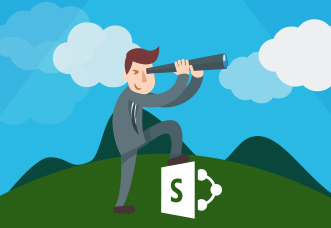


In working with SharePoint for more than a decade, one of the facts that I have come to accept is that Search is central to all of our SharePoint strategies, and it can be very difficult to get right. This is not meant to discourage companies from pursuing their current path, but a recognition that most companies do not take it as seriously as they should. Search is a fundamental capability of any knowledge management and collaboration platform. It is used by everyone, and is a core layer that data-centric applications leverage heavily.

Just ask the experts. According to Jeff Fried, CTO of BA Insight, one of the leading search ISVs within the SharePoint community, and a former VP at Microsoft-acquired FAST Search and Transfer:
Microsoft has leading edge technology AND the largest brain trust in enterprise search on the planet and continues to invest strongly. And search is still an unsolved problem, with lots of innovation ahead.
With Microsoft's push toward the cloud, and their heavy investments in the machine-learning capabilities within Office Graph, the nature of how search works in the enterprise is rapidly evolving. Which is not to say that past investments were wasted -- in fact, organizations that have built out complex taxonomies and robust search solutions may actually be ahead of the curve, and better able to leverage the power of Microsoft's search innovation, much of which will be leveraged through social interactions.
Think of social computing as another layer of search. From real-time co-authoring and threaded discussions on a Word document or PowerPoint, to your ability to receive, edit, tag, and re-share content from inside just about every business tool and platform, social computing has become a core component of the way we now work. Beyond the simple chat capabilities, what is generated through social is a real-time web of connections and data that can be searched, analyzed, and connected to create a whole that is better than the sum of its parts. The Office Graph can identify the content people consume, when they use it, and with whom, helping you to better understand the influencers within your organization, and where communications breakdowns are happening.
And social can improve your search results by "humanizing" the process of adding tags and context to your content. More from Jeff Fried:
The gap between what search can be and what it is at most organizations is huge - not even considering future technology, just today's shipping software. And the biggest roadblock is not the technology at all - it's the mindset, approach, and naiveté of people deploying search.
Basically our familiarity with internet search and the industry dynamics have led to a "search cycle of immaturity" that traps many organizations. The Google phenomenon often leads enterprises into thinking that their focus should be the search engine, and they go through the process of replacing search engines to solve their enterprise search problem. But Google’s internet search, with thousands of engineers and a multi-billion dollar revenue stream behind it, is neither achievable nor in fact appropriate inside the enterprise.
The key attributes of success in internet search do apply to search-driven intranets and portals, so getting the right approach and implementing search well really is possible.
As more companies adopt and deploy SharePoint, stakeholders are increasingly asking the question: what is the role of social computing in the enterprise? They want to know the business value of these tools and the many vendors pushing solutions. They want to know what best practices can be applied to their organization today, and the tactical steps that will help them better communicate with their teams, their partners, and their customers. Spurious texts like the one above just don't help anyone.
Here's the key to understanding social: the fundamental element of any social computing solution, any content management platform, and linking the two together is metadata. It is attached to all of your content, it organizes and differentiates your lists and libraries, and it enables your workflows and forms. On top of your metadata layer are your structured taxonomy and your unstructured, or user-generated "folksonomy." Taxonomy and folksonomy provide order and purpose to your content and to your platform.
Social is the next layer, accessing both the structured taxonomy and the unstructured folksonomy, working side-by-side with the automation and machine-learning capabilities offered by Office Graph and through various partner solutions. Through interaction with the social tools, end users introduce context to the data. They tag, they link, they Like, they rate, they share, they talk about it, and across all of this they build intricate webs of connections between people and activities and content.
Social tools greatly extend contextual search, surfacing data that would otherwise not be found through traditional search methods. And they are increasingly the way that your workforce communicates with customers, partners, and each other.
As a leader within the social collaboration category, the team at Beezy would love to talk to you about how our solution can be leveraged to improve the context of your content, making your SharePoint environment more collaborative -- and your search experience more effective. Contact us at info@beezy.net today for details!

No Comments Yet
Let us know what you think